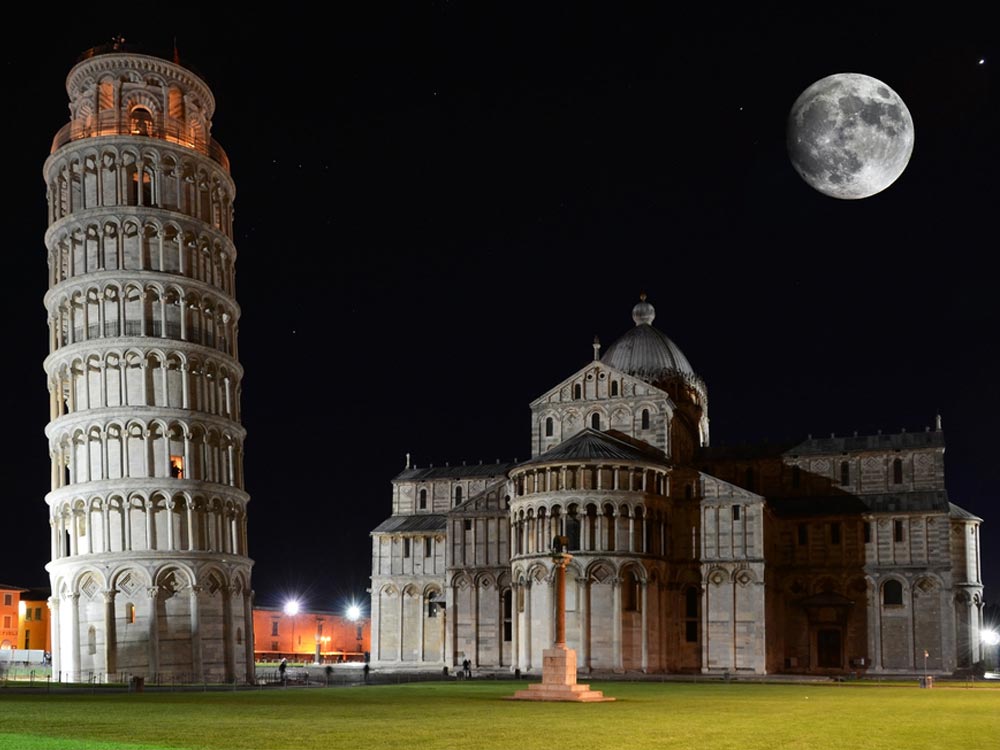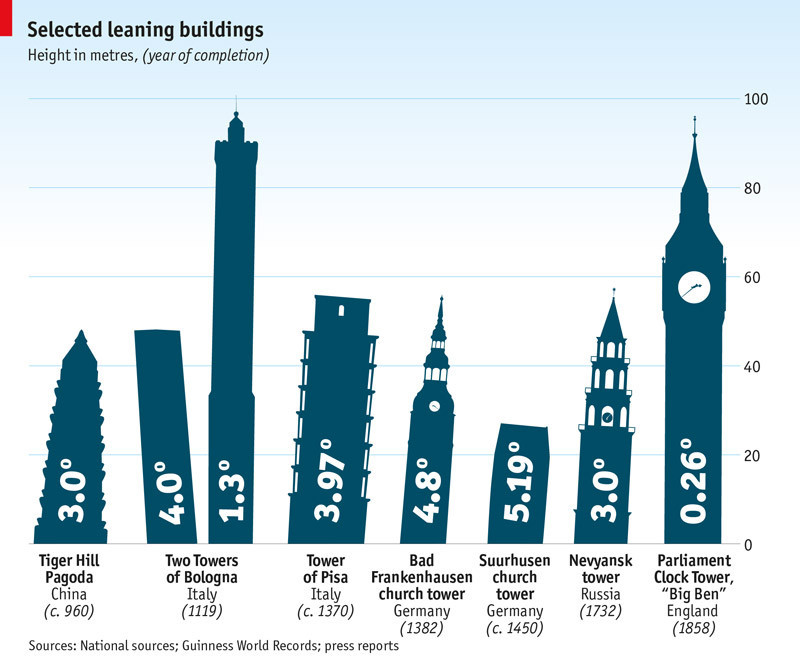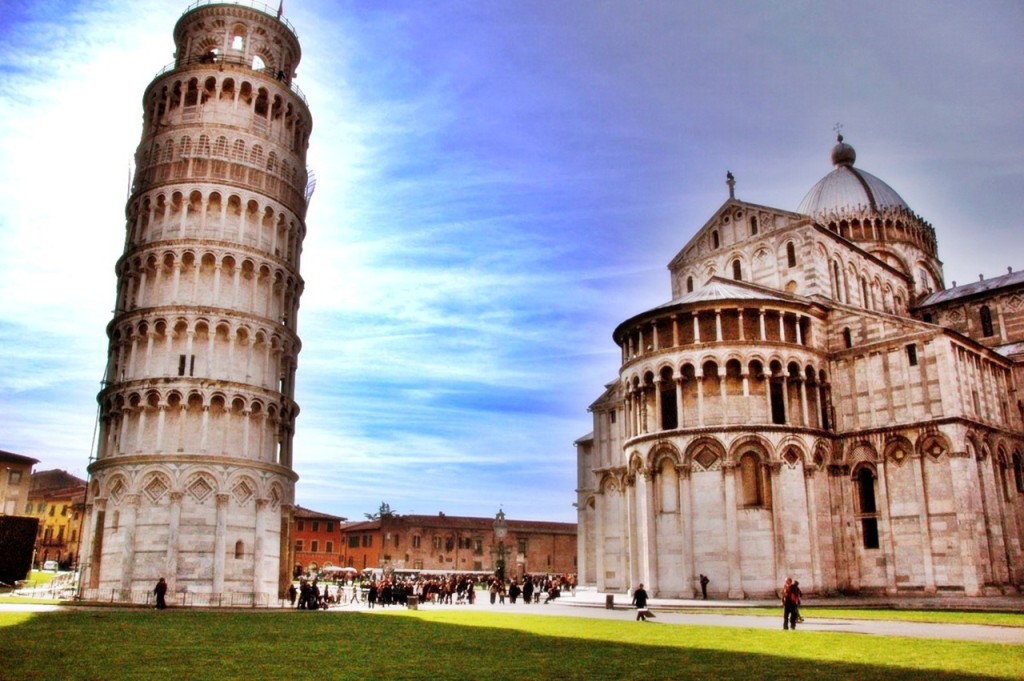The Leaning Tower of Pisa is the campanile, or freestanding bell tower, of the cathedral of the Italian city of Pisa, known worldwide for its unintended tilt to one side. It is situated behind the Cathedral and is the third oldest structure in Pisa’s Cathedral Square (Piazza del Duomo) after the Cathedral and the Baptistry. The tower’s tilt began during construction, caused by an inadequate foundation on ground too soft on one side to properly support the structure’s weight. The tilt increased in the decades before the structure was completed, and gradually increased until the structure was stabilized (and the tilt partially corrected) by efforts in the late 20th and early 21st centuries. We put together a list of 10 interesting facts about the leaning tower of Pisa.
10. It took 199 years to build the Leaning Tower of Pisa, beginning in August 1173. The construction was stopped twice, the first time for 100 years, the second time in 1284. Both times it was due to wars.

9. The foundation of the Leaning Tower of Pisa, only 3 meter deep, was built on a dense clay mixture. As it turned out, the clay was not strong enough to hold the tower upright. It began to lean in 1178, once construction on the second floor had begun.

8. There are several other towers in Pisa that also lean. In 1989, a similarly constructed bell tower in Pavia, northern Italy, collapsed suddenly.

7. The tower has eight stories, including the chamber for the bells.

6. Inside the tower there are seven bells. Each bell represents one note of the musical major scale.

5. Weight of tower is approximately 14,500 tonnes.

4. The tower is slightly curved from the attempts by various architects to keep it from leaning more or falling over.

3. The top of the leaning tower of Pisa is more than 3.9 meters (about 13 feet) off the vertical.

2. Even a minor earthquake in the region could have devastating consequences.

1. In 2008 engineers stated that the Tower had stopped moving. This is the first time in its history that it has not been slowly leaning further to one side. Engineers expect that the famous structure will remain stable for at least another 200 years. By then, in case another intervention is required, the technology available to make improvements could be far more advanced and preserve the tower for another 800 years.

Source: Tourvia

